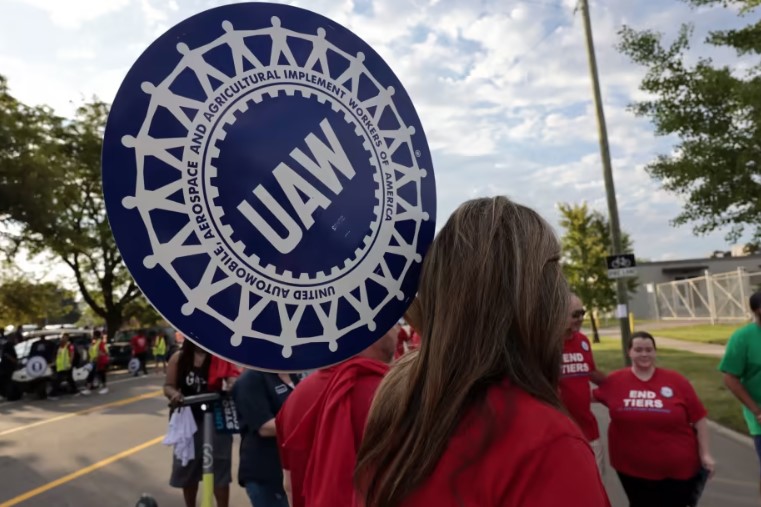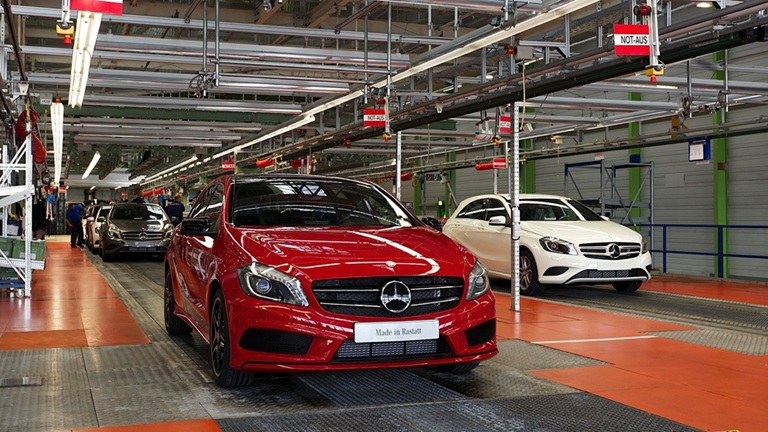For the first time in its history, the United Auto Workers union has simultaneously initiated strikes against General Motors, Ford, and Stellantis, marking a significant moment in labor relations within the nation’s automotive industry.
The strike ensued following the union’s ambitious requests for increased wages, improved benefits, and enhanced job security measures for its members. This move was prompted by the fact that all three automakers had reported either record-breaking or exceptionally high profits, and the union sought to regain many of the concessions it had been compelled to concede over a decade ago when the companies were in dire financial straits and teetering on the edge of bankruptcy.
Despite the automakers’ offers of substantial double-digit pay raises, they fell short of satisfying the union negotiators’ demands. Just moments before the contract expiration deadline, the union pinpointed the three sprawling assembly plants that would become the focal points of the strike action.
These plants include GM’s Wentzville facility in Missouri, which employs 3,600 UAW members; Ford’s Michigan Truck plant in Warren, Michigan, with 3,300 workers participating in the strike; and Stellantis’ Toledo Assembly complex in Ohio, where a significant workforce of 5,800 employees would join the strike.
In a statement, GM expressed it’s “disappointed” but affirmed its commitment to ongoing negotiations.
The chosen plants manufacture vehicles that are highly lucrative for the automakers and remain in strong demand. The strike will involve approximately 12,700 employees in total. The UAW represents around 146,000 workers across Ford, GM, and Stellantis as a whole.
“We got to do what we got to do to get our share of economic and social justice in this strike,” UAW President Shawn Fain said outside the Ford facility in Wayne, minutes after the strike began. “We’re going to be out here until we get our share of economic justice. And it doesn’t matter how long it takes.”
“For the first time in our history, we will strike all three of the ‘Big Three’ at once,” said Fain. “We are using a new strategy, the ‘stand-up’ strike. We will call on select facilities, locals or units to stand up and go on strike.”
Fain has characterized the union’s intentions as a “stand-up strike,” a tribute to the historical “sit-down” strikes carried out by the UAW during the 1930s.
Despite the companies’ offers to increase hourly wages by up to 20% throughout the contract duration, the union proceeded with the strike. These offers, when applied to the current highest hourly wage of $32.32, would have elevated the most senior autoworkers’ annual base pay to over $80,000, excluding overtime or profit-sharing bonuses.
Some of the pivotal proposals put forth by the union encompass a 40% rise in hourly wages, a shortened 32-hour workweek, a return to conventional pension plans, the removal of compensation tiers, and the reinstatement of cost-of-living adjustments (COLA). Additionally, the negotiations include discussions about improving retiree benefits and enhancing vacation and family leave benefits.
Furthermore, the union had additional ambitious requests aimed at undoing the concessions it had consented to in 2007 and 2009. During those years, Ford faced severe financial difficulties, while GM and Chrysler were on the verge of bankruptcy and required federal bailouts.
(Source: Chris Isidore | Vanessa Yurkevich | CNN | Michael Wayland | CNBC)









